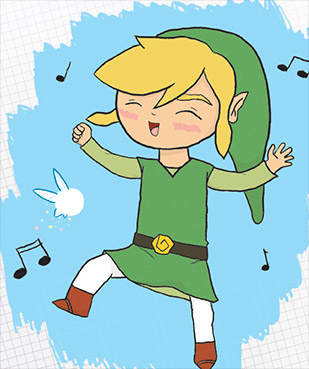Setting the mood with video game music

The interactivity of video games has never been a complete experience without the existence of sounds and music. From the blips and bloops of Pong to the epic soundtrack of Mass Effect, the auditory senses are increasing stimulated by captivating pieces of music written specifically for video games.
Some of the earliest pieces of video game music I heard was the beautiful chiptune title theme for the 1990 Gameboy game, The Final Fantasy Legend and the dreamy soundscapes of 1998’s Spyro the Dragon. Through the non-original but extremely well chosen soundtrack of the Tony Hawk Pro Skater series, my exposure to a wide variety of music opened the doors for my own music ventures and I largely credit these games for giving me the key.
Video games are an interactive experience in which our visual senses are stimulated through graphics of varying quality and the audio is filled with constructed sound bites and voice acting. Without the music, these games would simply not be as enjoyable as they are.
This doesn’t really happen for that reason but more realistically, a bad soundtrack or music selection can really ruin a game if done improperly. Again, this rarely is the case and it’s difficult to think of a bad video game soundtrack because some of the more odd selections of music are sometimes essential to the general vibe of the game. An example of this would be the infamous car combat series known as Twisted Metal, which featured the most absurd ‘80s-inspired thrash metal music for most of the games. It sounds crazy but then again, there is something really awesome about blowing up cars on a freeway while listening to a cheesy guitar solo.
In the history of gaming, music has undergone a huge change since the early days of 8-bit music. Early examples would include Rally-X, which was a 1980 arcade game that featured the first instance of continuous streaming music and 1981 hit Frogger that introduced roughly eleven different gameplay tracks in addition to other short music clips for level starting and game over portions.
As the ‘80s closed and the era of 16-bit gaming became notable for it’s inclusion of far more elaborate and textured music pieces. Composers from largely Japanese origin such as Hirokazu Tanaka, Nobuo Uematsu, and Koichi Sugiyama became famous for their scores on hit titles such as Dragon Quest, Final Fantasy, Earthbound, Metroid, Mario and many more.
In 1994, the release of the Playstation system set a new bar for sound quality as it could now handle CD-quality music with 24 channels of 16-bit samples up to 44.1kHz sample rate. For people seeking a pleasurable auditory experience, this was a step in the right direction and opened the gates for explosive high quality soundtracks by the beginning of the new millennium.
Our video games today are now awarded for their soundtracks. They have become staples in hit games and are now being pursued by big name composers.
Some can remember the first moments of hearing the epic soundtrack of Halo for example. Its slow, Gregorian chanting that slowly opens the flood gates for pounding drums and heavy guitar riffs just pumps the player full of adrenaline as they rush to defeat the hordes of aliens that await them around every corner.
We need these kind of soundtracks to enhance our gaming experience and encourage greater crossover between musicians and game designers who both produce their respective forms of art for people looking to escape and enter fantastic worlds we can only dream of.













